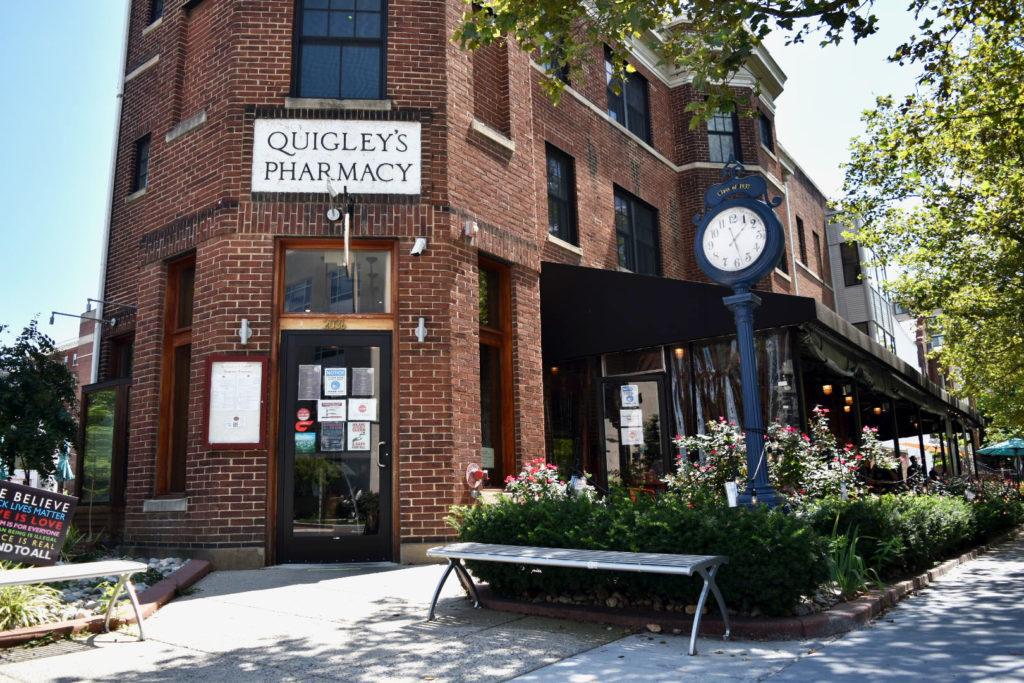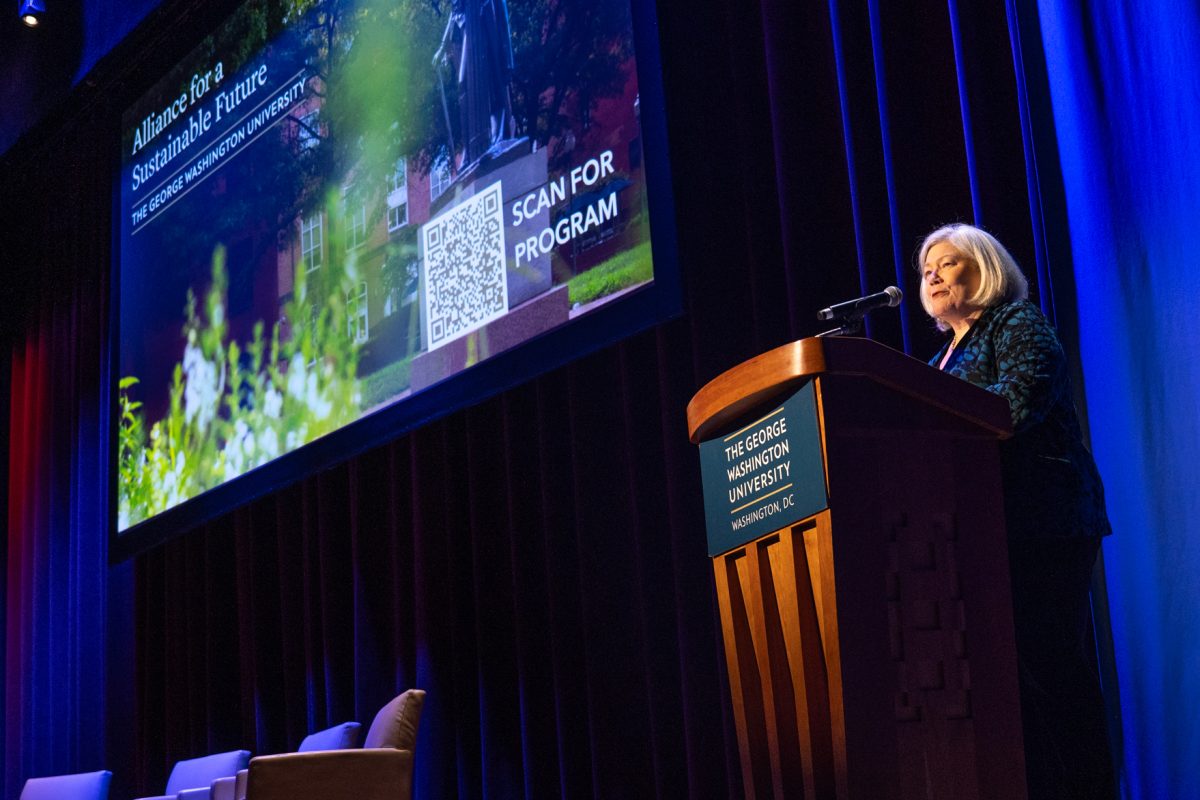Typically thriving in a neighborhood buzzing with students and government officials, the clientele that GWorld vendors once took for granted seemed to all but disappear from Foggy Bottom in recent months.
GWorld restaurants that have enjoyed the support of these regulars for years saw their businesses upended as students and local workers fled the area amid the COVID-19 outbreak. With at least 15 percent of campus vendors still closed down and others starting their recovery from financial loss and public health scares, small restaurant personnel said they will see operations take on new norms as strict health precautions reshape dining and delivery.
GWorld owners and managers said customer dropoff and current health risks have contributed to revenue fallout, staff cuts and in-person service changes during the COVID-19 pandemic. While revenue and profit have long stood as top business priorities, owners and staff members said public health and safety will dictate how restaurants operate through adjusted staffing and dining operations moving forward.
Jeremy Pollok, the managing partner of Tonic, said his restaurant has shut down and reopened three times during the pandemic – first when the coronavirus broke out in March, then during anti-racism protests and citywide curfews in June and finally after two employees’ “significant others” tested positive for COVID-19 in late July. Pollok said he has laid off about 80 employees since the pandemic hit the District, now running with a “skeleton crew” of 20, with up to seven people working on a single day.
“It’s been a real challenge for everyone, and just trying to keep it together for everybody out there, the emotional toll, I would say it’s been difficult,” he said. “Other than that, you’re in survival mode. You’re just trying to make it day by day and stay open, and we’re trying to get through this.”
As layoffs and financial loss crippled businesses like Tonic, GWorld vendors turned to federal aid this spring but received little support from government programs because of an overload in applicants. Pollok launched a GoFundMe page for his laid-off and furloughed employees earlier this spring, hoping to support the workers he said he would rehire if he could.
“The hardest part has nothing to do with business,” Pollok said. “It’s just heart-wrenching.”
Pollok said revenue has fallen 80 percent since the pandemic hit, as the majority of the restaurant regulars – students, faculty, staff and employees from the World Bank, International Monetary Fund and U.S. State Department – have vanished from Foggy Bottom. The restaurant has now gone from serving an average of 300 people per day just for lunch before the pandemic to now just about 25 people, Pollok said.
“Foggy Bottom’s a pretty quiet area when GW’s not open and those various entities aren’t open,” he said.
Since the District has eased into reopening stages, Pollok said the restaurant now offers 80 seats outdoors and 40 indoors in addition to takeout and delivery services. He said masks, gloves and temperature checks have been routine for Tonic employees, as customers are required to wear masks and fill out contact tracing paperwork in case someone who eats at the restaurant tests positive for the virus.
As Tonic heads into the fall months of the pandemic, Pollok said returning students and workers will help enliven both the neighborhood and his business, as he remains “very hopeful” for the fall. University President Thomas LeBlanc said during a Faculty Senate meeting that officials expect 500 students to fill select residence halls on campus this fall.
“Is it going to be normal? No.” Pollok said. “But is it going to be a little bit more than we’ve seen? I hope so. And it’s the starting block, and it’s an opportunity.”
Murat Siyam, the managing partner of Homeslyce Pizza Bar, said his restaurant is about 30 percent down in revenue from pre-pandemic business levels – a sign of improvement after it fell to a 60 percent revenue drop at the height of the pandemic earlier this year. Siyam said the city was a “ghost town” during Mayor Muriel Bowser’s stay-at-home order issued in late March when there weren’t students attending school or workers commuting to jobs nearby.
“It’s been a day-to-day struggle, but we have a very hardworking staff that’s been in this together so we’re doing what we can to survive,” he said.
Siyam said Homeslyce has found new ways to attract customers after the pandemic struck and sit-down dining reopened. He said the restaurant has continued to serve while surrounding shops closed, and the joint opened an outdoor seating area on its patio, which has drawn in a new crowd of locals and tourists.
Siyam said he hopes that as more students return in the fall to residence halls or off-campus apartments, he can attract the customers that have fueled the restaurant in years past. He said better advertising and word of mouth from customers will help boost business.
“It’s going to really depend on how we proactively target and help the GW incoming students because they’re still going to need a place to go eat,” he said. “Just because they’re taking classes online doesn’t mean that they’re not going to eat. So it’s just going to be a little different format.”
Jason Lin, a manager at Toryumon Japanese House, said the restaurant has seen its 25 employees drop to seven and now only processes about 40 orders per day, compared to 200 to 300 prior to the pandemic. Lin said the restaurant currently only offers carryout and delivery orders as a result of the decline.
“Due to COVID-19, everybody’s gone,” Lin said. “Everybody goes back to their house, so it’s pretty empty in this whole area.”
Yet a positive sign has been the hours – after Toryumon was only open for “half days” during the last two months, the restaurant switched to its regular 10:00 a.m. to 11:00 p.m. hours earlier this month after customers requested lunch become available again, Lin said.
“We just do our job,” he said. “We keep the good quality of the food, keep our service, and I believe after COVID-19 when the people are back, we’ll be good.”







